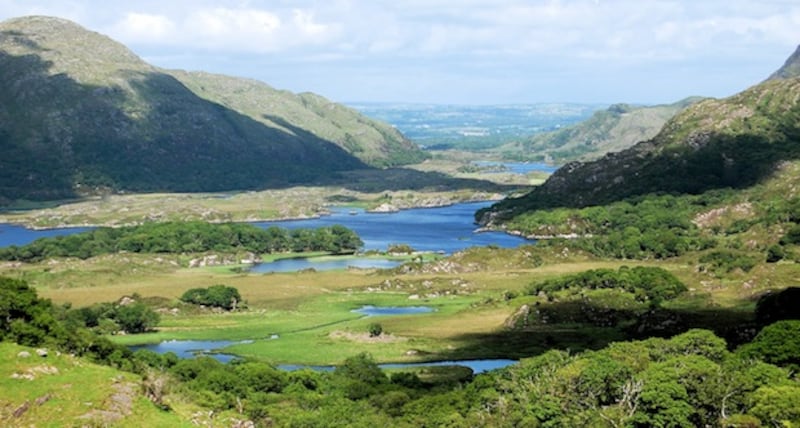The Emerald Isle. The Green Island. The Food Isle. However Ireland is referred to when you talk about marketing Irish food abroad, one thing shines through strongly: our association with the colour green. But according to some industry experts we need to build on this association or we risk becoming complacent.
There’s no doubt that Ireland’s association with the colour green is one of the Irish food industry’s strongest assets. It immediately conjures up images of lush pastures and verdant land; a fertile country bursting to the seams with fresh, high-quality produce. And that’s not far from the truth. Each year Ireland produces enough food to feed 36 million people, nowhere near what the domestic population can consume. More than 80 per cent of what we produce is sent abroad, with food and drink exports exceeding €9 billion for the first time in 2012. Ireland is the biggest net exporter of dairy ingredients, beef and lamb in Europe.
The Department of Agriculture’s Food Harvest 2020 strategy sets out targets to grow Irish food exports even further. Its plan is for exports to reach €12 billion by 2020 and it identifies three trends that will provide opportunities for this: a growing global population, increased affluence in the Bric countries and a premium health-related market in Europe and the US.


Marketing will play an important role in allowing Ireland to capitalise on these opportunities. Food Harvest 2020 recommends that an umbrella “Brand Ireland” be developed; one that extends Ireland’s association with the colour green to emphasise its environmental credentials. Enter Origin Green.
“Origin Green is a sustainability development programme that demonstrates the commitment of Irish producers to operating sustainably,” says Una Fitzgibbon, marketing manager for Bord Bia. “It’s about the positioning of Irish exports overseas and we’re promoting it internationally.”
“Research shows that Ireland has a strong ‘green’ reputation abroad. It’s a source of natural high quality food, drink and ingredients. It’s a green country, with a temperate climate and lush countryside.
“But that image is not enough to grow food and drink exports. Origin Green builds on that and provides proof of Ireland’s green credentials.”
Participating companies commit to a sustainability charter covering areas including greenhouse gas emissions, energy conservation, water management, biodiversity, community initiatives and health and nutrition. They submit a sustainability plan, which is then independently verified, providing a firm platform from which to market their eco-friendliness.
“In many ways Origin Green replaces ‘Ireland, the food island’ but that never had the level of commitment because it was more of an image piece,” says Fitzgibbon. “This has the reality behind it. It’s designed to make the most of Ireland’s competitive advantage, plus it’s the right thing to do.”
There are currently 12 companies with verified plans, 42 that have submitted plans and another 189 who have registered are still at workshop stage. The aim is to have 75 per cent of exporters registered by 2014; the current level is 65 per cent.
“At the moment it’s a B2B platform, not a consumer platform – although it might become one in the future,” says Fitzgibbon. “Sustainability is becoming more and more integrated into our trade customers’ business.”
While the reputation of Irish food among the food industry may be strong, that image doesn’t always trickle down to consumers. Margaret Jeffares runs Good Food Ireland, which aims to promote Irish food to tourists who are visiting Ireland.
“There is curiosity about Irish food in some markets but to some extent people think it’s all bacon and cabbage,” she says. “I tell them yes, that’s one of our traditional dishes, but we also have buffalo mozzarella from our own herd and balsamic vinegars. We have smoked venison and wild boar. Every single time I meet a consumer internationally they have said they had no idea Ireland had such a passion and commitment to Irish food.”
By linking high-quality food to the tourism sector, Jeffares says Good Food Ireland is helping to spread the word about Irish ingredients in foreign markets. They have just opened an online shop that allows tourists to source Irish products when they return home and Jeffares says that in the month since it launched five of the featured producers have registered with the US Food and Drug Administration to prepare for exporting to the US.
Entering new markets can be daunting for small businesses but by promoting their Irishness they can, by association, benefit from the legwork of established exporters. Conor Hyde, chief executive of Bullseye Marketing, which specialises in helping Irish Food companies enter overseas markets, says Irish heritage is the number one thing to promote in Irish food, with the actual product coming second.
“Sometimes there’s a bit of a cliche of Ireland as a misty green isle. We would play that up as a USP in the packaging and marketing; ie ‘This is a taste of Ireland’. Right across Europe, Irish food is appreciated for its quality and consistency.”
He says strong branding is vital and he would like to see the proportion of branded products in Irish food and drink exports increase from the current figure of 40 per cent.
“We’re doing well on commodities but the problem is that they’re price-driven. We need to focus on sending Irish brands abroad. Besides the regular suspects – Kerrygold, Guinness, Baileys – they’re very hard to find.”









